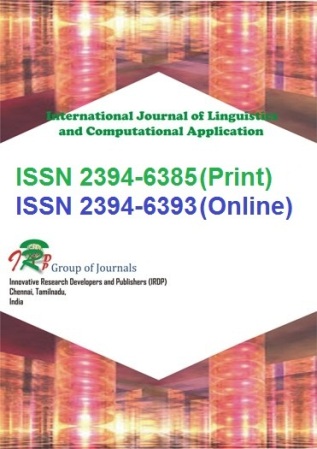
International Journal of Linguistics and Computational Applications
Yazarlar: Ali Ashrafi
Konular:-
DOI:10.30726/ijlca/v8.i2.2021.82003
Anahtar Kelimeler:Iranian Dialects,Kurdish Dialects,Syntactic Typological,Indo-Iranian Dialects,Combinatorial Language Frameworks
Özet: Iranian dialects are subgroups of Indo-Iranian dialects and are arranges dependent on their course of events and locale. All Iranian dialects of the center and current occasions have some normal highlights. The plain word request is generally action word last, and the time framework depends on two action word lines, present and past, no matter what. While the current stem proceeds with the Old Iranian present that was acquired straightforwardly from Indo-European, the previous stem depends on a participatory type of the action word finishing off with – ta. The Iranian dialects are probably going to be spoken by in excess of 80 million individuals in a wide zone from Turkey with Zaza as the westernmost to China with Sarikoli as the western that the easternmost Iranian language and primarily cover the entirety of Iran, Afghanistan and Tajikistan. The advancement of the Iranian dialects can be analyzed in three significant chronicled periods: Old Iranian (up to the fourth/third century BC), Central Iranian (from the fourth/third century BC to the eighth/ninth century AD) and new Iranian language (since 900 AD). Two of the antiquated Iranian dialects are known and archived, Avestan and Old Persian. The Central Iranian dialects (approx. 300 BC – AD 950) are significantly more various. They are partitioned into two principle gatherings, western and eastern. Current Iranian dialects fall into two enormous “Eastern” and “Western” gatherings, with “Northern” and “Southern” sub-gatherings, separately. The qualification between the eastern and western Iranian dialects lies in the fundamental geological dispersion of the principle speakers of these dialects in the east or west of Lut deserts in Iran.